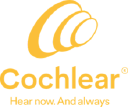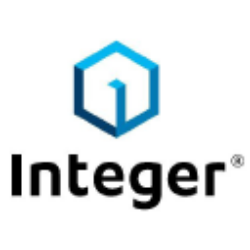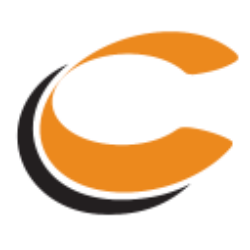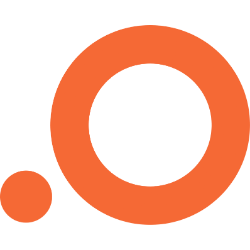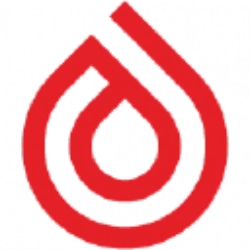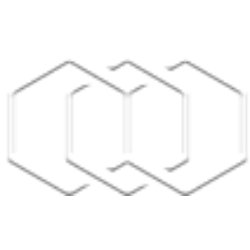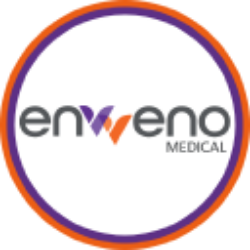AHPI
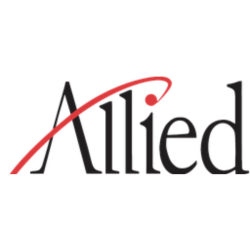
Allied Healthcare Products, Inc.
AHPI
(1.5)0,00 USD
-27.26% ROA
0% ROE
-0.41x PER
2.207.848,00 USD
47.28% DER
0% Yield
0% NPM
Allied Healthcare Products, Inc. Stock Analysis
Allied Healthcare Products, Inc. Fundamental Analysis
Fundamental analysis in stock investing is like studying the foundation of a house before buying it. It involves looking at a company's financial health, like its earnings, assets, and debts, to determine if it's a good investment based on its fundamental strength and potential for growth.
| # | Analysis | Rating |
|---|---|---|
| 1 |
PBV
The stock's low PBV ratio (0x) suggests it's undervalued, making it an attractive opportunity for investors. |
|
| 2 |
DER
The stock has a minimal amount of debt (47%) relative to its ownership, showcasing a strong financial position and lower risk for investors. |
|
| 3 |
Graham Number
The Graham number analysis indicates that this company's stock price is likely undervalued, raising prospects for a favorable investment opportunity. |
|
| 4 |
Buffet Intrinsic Value
The company's stock seems undervalued (0) by Warren Buffett's formula, indicating a promising investment opportunity as its intrinsic value exceeds the market price. |
|
| 5 |
ROE
Negative ROE (-52.63%) indicates poor financial performance, raising concerns about profitability and efficiency in utilizing shareholders' equity. |
|
| 6 |
ROA
The stock's ROA (-16.59%) indicates that it's not effectively utilizing its assets to generate profits, making it a less favorable option to invest and earn consistent returns. |
|
| 7 |
Revenue Growth
Company's revenue has remained stagnant over the past three years, indicating a lack of growth and making it a less favorable option. |
|
| 8 |
Net Profit Growth
Despite the passage of five years, this company's net profit has not shown any improvement, highlighting a lack of growth and making it a less appealing investment prospect. |
|
| 9 |
Assets Growth
Company's revenue has remained stagnant over the past three years, indicating a lack of growth and making it a less favorable option. |
|
| 10 |
Dividend Growth
Investors should note the company's stagnant dividend growth over the past three years, indicating limited profitability and potentially diminishing returns. |
|
| 11 |
Dividend
No dividends from the company in the past three years raises doubts about its profitability for shareholders. |
Allied Healthcare Products, Inc. Technical Analysis
Technical analysis in stock investing is like reading the patterns on a weather map to predict future weather conditions. It involves studying past stock price movements and trading volumes to make predictions about where a stock's price might go next, without necessarily looking at the company's financial health.
| # | Analysis | Recommendation |
|---|---|---|
| 1 | Awesome Oscillator | Sell |
| 2 | MACD | Sell |
| 3 | RSI | Buy |
| 4 | Stoch RSI | Sell |
Allied Healthcare Products, Inc. Price Chart
Financial Statements
Financial statements are like report cards for companies. They show how much money a company makes (income statement), what it owns and owes (balance sheet), and where it spends its money (cash flow statement), helping stock investors understand if a company is healthy and worth investing in.
Income Statements
An income statement for a company is like a scoreboard for its profits and losses. It shows how much money the company made (revenue) and how much it spent to make that money (expenses), helping stock investors see if a company is making a profit or not.
Revenue in stock investing is the total amount of money a company earns from its sales, and it's a key factor that investors consider to assess a company's financial performance and growth potential.
| Year | Revenue | Growth |
|---|---|---|
| 1991 | 54.600.000 | |
| 1992 | 58.600.000 | 6.83% |
| 1993 | 61.200.000 | 4.25% |
| 1994 | 74.100.000 | 17.41% |
| 1995 | 111.600.000 | 33.6% |
| 1996 | 120.100.000 | 7.08% |
| 1997 | 118.100.000 | -1.69% |
| 1998 | 96.500.000 | -22.38% |
| 1999 | 72.800.000 | -32.55% |
| 2000 | 64.276.643 | -13.26% |
| 2001 | 64.927.678 | 1% |
| 2002 | 60.414.884 | -7.47% |
| 2003 | 60.863.358 | 0.74% |
| 2004 | 59.103.313 | -2.98% |
| 2005 | 56.120.150 | -5.32% |
| 2006 | 57.545.589 | 2.48% |
| 2007 | 56.500.974 | -1.85% |
| 2008 | 56.364.111 | -0.24% |
| 2009 | 52.072.676 | -8.24% |
| 2010 | 46.034.248 | -13.12% |
| 2011 | 46.783.436 | 1.6% |
| 2012 | 43.445.621 | -7.68% |
| 2013 | 38.551.774 | -12.69% |
| 2014 | 36.370.616 | -6% |
| 2015 | 35.461.769 | -2.56% |
| 2016 | 35.952.487 | 1.36% |
| 2017 | 33.512.030 | -7.28% |
| 2018 | 33.759.953 | 0.73% |
| 2019 | 31.381.521 | -7.58% |
| 2020 | 31.894.262 | 1.61% |
| 2021 | 36.279.476 | 12.09% |
| 2022 | 27.046.587 | -34.14% |
Research and Development Expenses are the costs a company incurs to create and improve its products or services, which can be important for investors to evaluate a company's innovation and potential for future growth.
| Year | Research and Development Expenses | Growth |
|---|---|---|
| 1991 | 0 | |
| 1992 | 0 | 0% |
| 1993 | 0 | 0% |
| 1994 | 0 | 0% |
| 1995 | 0 | 0% |
| 1996 | 0 | 0% |
| 1997 | 0 | 0% |
| 1998 | 0 | 0% |
| 1999 | 0 | 0% |
| 2000 | 0 | 0% |
| 2001 | 0 | 0% |
| 2002 | 0 | 0% |
| 2003 | 0 | 0% |
| 2004 | 0 | 0% |
| 2005 | 0 | 0% |
| 2006 | 0 | 0% |
| 2007 | 0 | 0% |
| 2008 | 0 | 0% |
| 2009 | 0 | 0% |
| 2010 | 0 | 0% |
| 2011 | 0 | 0% |
| 2012 | 0 | 0% |
| 2013 | 0 | 0% |
| 2014 | 0 | 0% |
| 2015 | 0 | 0% |
| 2016 | 0 | 0% |
| 2017 | 0 | 0% |
| 2018 | 0 | 0% |
| 2019 | 0 | 0% |
| 2020 | 0 | 0% |
| 2021 | 0 | 0% |
| 2022 | 0 | 0% |
General and Administrative Expenses are the costs a company incurs to run its day-to-day operations, such as office rent, salaries, and utilities, which investors consider to understand a company's overall efficiency and management effectiveness.
| Year | General and Administrative Expenses | Growth |
|---|---|---|
| 1991 | 12.400.000 | |
| 1992 | 13.400.000 | 7.46% |
| 1993 | 13.900.000 | 3.6% |
| 1994 | 16.800.000 | 17.26% |
| 1995 | 24.800.000 | 32.26% |
| 1996 | 31.400.000 | 21.02% |
| 1997 | 33.900.000 | 7.37% |
| 1998 | 23.900.000 | -41.84% |
| 1999 | 18.700.000 | -27.81% |
| 2000 | 16.834.315 | -11.08% |
| 2001 | 14.572.963 | -15.52% |
| 2002 | 22.346.842 | 34.79% |
| 2003 | 13.550.592 | -64.91% |
| 2004 | 12.660.358 | -7.03% |
| 2005 | 11.843.037 | -6.9% |
| 2006 | 12.112.624 | 2.23% |
| 2007 | 12.051.500 | -0.51% |
| 2008 | 12.084.971 | 0.28% |
| 2009 | 13.041.564 | 7.33% |
| 2010 | 11.871.758 | -9.85% |
| 2011 | 10.593.869 | -12.06% |
| 2012 | 10.610.858 | 0.16% |
| 2013 | 10.735.806 | 1.16% |
| 2014 | 10.423.133 | -3% |
| 2015 | 8.763.335 | -18.94% |
| 2016 | 9.279.061 | 5.56% |
| 2017 | 8.607.584 | -7.8% |
| 2018 | 8.446.056 | -1.91% |
| 2019 | 0 | 0% |
| 2020 | 0 | 0% |
| 2021 | 0 | 0% |
| 2022 | 0 | 0% |
EBITDA stands for Earnings Before Interest, Taxes, Depreciation, and Amortization. It is a measure that helps stock investors analyze a company's profitability by looking at its earnings without considering certain expenses. This helps to get a clearer picture of the company's financial performance and its ability to generate cash flow.
| Year | EBITDA | Growth |
|---|---|---|
| 1991 | 8.000.000 | |
| 1992 | 9.800.000 | 18.37% |
| 1993 | 11.800.000 | 16.95% |
| 1994 | 13.400.000 | 11.94% |
| 1995 | 17.600.000 | 23.86% |
| 1996 | 7.300.000 | -141.1% |
| 1997 | -400.000 | 1925% |
| 1998 | 6.500.000 | 106.15% |
| 1999 | -2.200.000 | 395.45% |
| 2000 | 923.910 | 338.12% |
| 2001 | 3.360.118 | 72.5% |
| 2002 | -11.636.174 | 128.88% |
| 2003 | 799.393 | 1555.63% |
| 2004 | 4.442.648 | 82.01% |
| 2005 | 3.595.034 | -23.58% |
| 2006 | 3.215.690 | -11.8% |
| 2007 | 3.786.755 | 15.08% |
| 2008 | 2.561.000 | -47.86% |
| 2009 | -15.919.815 | 116.09% |
| 2010 | 475.678 | 3446.76% |
| 2011 | 1.725.177 | 72.43% |
| 2012 | 613.339 | -181.28% |
| 2013 | -690.767 | 188.79% |
| 2014 | -1.864.930 | 62.96% |
| 2015 | -449.603 | -314.79% |
| 2016 | -774.915 | 41.98% |
| 2017 | -962.040 | 19.45% |
| 2018 | -1.064.155 | 9.6% |
| 2019 | -1.951.946 | 45.48% |
| 2020 | -2.459.976 | 20.65% |
| 2021 | 52.883 | 4751.73% |
| 2022 | -4.119.041 | 101.28% |
Gross profit is the money a company makes from selling its products or services after subtracting the cost of producing or providing them, and it is an important measure for investors to understand a company's profitability.
| Year | Gross Profit | Growth |
|---|---|---|
| 1991 | 22.300.000 | |
| 1992 | 24.200.000 | 7.85% |
| 1993 | 26.100.000 | 7.28% |
| 1994 | 31.500.000 | 17.14% |
| 1995 | 46.100.000 | 31.67% |
| 1996 | 39.600.000 | -16.41% |
| 1997 | 35.700.000 | -10.92% |
| 1998 | 27.400.000 | -30.29% |
| 1999 | 16.900.000 | -62.13% |
| 2000 | 16.222.185 | -4.18% |
| 2001 | 16.662.568 | 2.64% |
| 2002 | 10.416.456 | -59.96% |
| 2003 | 14.053.632 | 25.88% |
| 2004 | 16.354.971 | 14.07% |
| 2005 | 14.450.860 | -13.18% |
| 2006 | 14.252.843 | -1.39% |
| 2007 | 14.472.849 | 1.52% |
| 2008 | 13.358.104 | -8.35% |
| 2009 | 11.799.587 | -13.21% |
| 2010 | 11.089.534 | -6.4% |
| 2011 | 11.002.779 | -0.79% |
| 2012 | 9.961.109 | -10.46% |
| 2013 | 8.242.290 | -20.85% |
| 2014 | 7.314.249 | -12.69% |
| 2015 | 7.069.598 | -3.46% |
| 2016 | 7.359.735 | 3.94% |
| 2017 | 6.555.690 | -12.26% |
| 2018 | 6.450.442 | -1.63% |
| 2019 | 5.038.627 | -28.02% |
| 2020 | 5.570.616 | 9.55% |
| 2021 | 7.109.496 | 21.65% |
| 2022 | 2.527.413 | -181.3% |
Net income in stock investing is like the money a company actually gets to keep as profit after paying all its bills, and it's an important measure to understand how well a company is doing financially.
| Year | Net Profit | Growth |
|---|---|---|
| 1991 | 4.300.000 | |
| 1992 | 5.600.000 | 23.21% |
| 1993 | 6.700.000 | 16.42% |
| 1994 | 7.300.000 | 8.22% |
| 1995 | 8.800.000 | 17.05% |
| 1996 | 1.800.000 | -388.89% |
| 1997 | -4.500.000 | 140% |
| 1998 | -7.400.000 | 39.19% |
| 1999 | -4.100.000 | -80.49% |
| 2000 | -1.713.477 | -139.28% |
| 2001 | 234.136 | 831.83% |
| 2002 | -11.731.008 | 102% |
| 2003 | -157.559 | -7345.47% |
| 2004 | 1.874.653 | 108.4% |
| 2005 | 2.341.364 | 19.93% |
| 2006 | 1.648.604 | -42.02% |
| 2007 | 1.641.580 | -0.43% |
| 2008 | 882.499 | -86.01% |
| 2009 | -16.761.813 | 105.26% |
| 2010 | -599.573 | -2695.63% |
| 2011 | 204.408 | 393.32% |
| 2012 | -424.426 | 148.16% |
| 2013 | -1.256.773 | 66.23% |
| 2014 | -2.805.913 | 55.21% |
| 2015 | -1.777.310 | -57.87% |
| 2016 | -2.304.831 | 22.89% |
| 2017 | -2.088.666 | -10.35% |
| 2018 | -2.192.170 | 4.72% |
| 2019 | -2.109.685 | -3.91% |
| 2020 | -3.014.100 | 30.01% |
| 2021 | 1.687.188 | 278.65% |
| 2022 | -5.361.428 | 131.47% |
EPS, or earnings per share, is a measure that shows how much profit a company has earned for each outstanding share of its stock, and it is important for stock investors as it helps understand the profitability of a company and compare it with other companies in the market.
| Year | Earning per Share (EPS) | Growth |
|---|---|---|
| 1991 | 1 | |
| 1992 | 2 | 0% |
| 1993 | 2 | 0% |
| 1994 | 3 | 50% |
| 1995 | 3 | 0% |
| 1996 | 1 | 0% |
| 1997 | -1 | 100% |
| 1998 | -2 | 0% |
| 1999 | -1 | 0% |
| 2000 | 0 | 0% |
| 2001 | 0 | 0% |
| 2002 | -3 | 100% |
| 2003 | 0 | 0% |
| 2004 | 0 | 0% |
| 2005 | 1 | 0% |
| 2006 | 0 | 0% |
| 2007 | 0 | 0% |
| 2008 | 0 | 0% |
| 2009 | -4 | 100% |
| 2010 | 0 | 0% |
| 2011 | 0 | 0% |
| 2012 | 0 | 0% |
| 2013 | 0 | 0% |
| 2014 | -1 | 0% |
| 2015 | 0 | 0% |
| 2016 | -1 | 0% |
| 2017 | -1 | 0% |
| 2018 | -1 | 0% |
| 2019 | -1 | 0% |
| 2020 | -1 | 0% |
| 2021 | 0 | 0% |
| 2022 | -1 | 100% |
Cashflow Statements
Cashflow statements show the movement of money in and out of a company, helping stock investors understand how much money a company makes and spends. By examining cashflow statements, investors can assess if a company is generating enough cash to pay its bills, invest in growth, and provide returns to stockholders.
Free cash flow is the leftover cash that a company generates after covering its operating expenses and capital expenditures, which is important for stock investors as it shows how much money a company has available to invest in growth, pay dividends, or reduce debt.
| Year | Free Cashflow | Growth |
|---|---|---|
| 1991 | 5.500.000 | |
| 1992 | 8.700.000 | 36.78% |
| 1993 | 5.100.000 | -70.59% |
| 1994 | 2.600.000 | -96.15% |
| 1995 | -6.600.000 | 139.39% |
| 1996 | -1.100.000 | -500% |
| 1997 | 8.800.000 | 112.5% |
| 1998 | -5.800.000 | 251.72% |
| 1999 | -1.300.000 | -346.15% |
| 2000 | 3.150.135 | 141.27% |
| 2001 | 1.336.634 | -135.68% |
| 2002 | 132.239 | -910.77% |
| 2003 | 2.110.154 | 93.73% |
| 2004 | 6.395.315 | 67% |
| 2005 | 3.921.079 | -63.1% |
| 2006 | 2.290.649 | -71.18% |
| 2007 | 833.032 | -174.98% |
| 2008 | 2.504.032 | 66.73% |
| 2009 | -4.286.744 | 158.41% |
| 2010 | 3.180.462 | 234.78% |
| 2011 | 1.129.333 | -181.62% |
| 2012 | -1.228.344 | 191.94% |
| 2013 | -1.347.264 | 8.83% |
| 2014 | -2.321.157 | 41.96% |
| 2015 | 673.184 | 444.8% |
| 2016 | -336.283 | 300.18% |
| 2017 | -707.959 | 52.5% |
| 2018 | -859.592 | 17.64% |
| 2019 | 59.342 | 1548.54% |
| 2020 | 29.770 | -99.33% |
| 2021 | -3.951.300 | 100.75% |
| 2022 | -2.732.376 | -44.61% |
Operating cash flow represents the cash generated or consumed by a company's day-to-day operations, excluding external investing or financing activities, and is crucial for stock investors as it shows how much cash a company is generating from its core business operations.
| Year | Operating Cashflow | Growth |
|---|---|---|
| 1991 | 6.200.000 | |
| 1992 | 9.100.000 | 31.87% |
| 1993 | 6.100.000 | -49.18% |
| 1994 | 4.600.000 | -32.61% |
| 1995 | -300.000 | 1633.33% |
| 1996 | 2.500.000 | 112% |
| 1997 | 8.900.000 | 71.91% |
| 1998 | -5.200.000 | 271.15% |
| 1999 | -200.000 | -2500% |
| 2000 | 3.448.175 | 105.8% |
| 2001 | 2.087.839 | -65.16% |
| 2002 | 3.830.299 | 45.49% |
| 2003 | 2.634.604 | -45.38% |
| 2004 | 7.025.863 | 62.5% |
| 2005 | 4.357.224 | -61.25% |
| 2006 | 3.305.618 | -31.81% |
| 2007 | 1.482.322 | -123% |
| 2008 | 3.674.479 | 59.66% |
| 2009 | -2.742.232 | 234% |
| 2010 | 3.517.925 | 177.95% |
| 2011 | 1.477.884 | -138.04% |
| 2012 | 982.596 | -50.41% |
| 2013 | 20.270 | -4747.54% |
| 2014 | -1.882.653 | 101.08% |
| 2015 | 814.350 | 331.18% |
| 2016 | -236.983 | 443.63% |
| 2017 | -686.911 | 65.5% |
| 2018 | -859.592 | 20.09% |
| 2019 | 59.342 | 1548.54% |
| 2020 | 647.581 | 90.84% |
| 2021 | -3.784.137 | 117.11% |
| 2022 | -2.657.340 | -42.4% |
Capex, short for capital expenditures, refers to the money a company spends on acquiring or upgrading tangible assets like buildings, equipment, or technology, which is important for stock investors as it indicates how much a company is investing in its infrastructure to support future growth and profitability.
| Year | Capital Expenditure | Growth |
|---|---|---|
| 1991 | 700.000 | |
| 1992 | 400.000 | -75% |
| 1993 | 1.000.000 | 60% |
| 1994 | 2.000.000 | 50% |
| 1995 | 6.300.000 | 68.25% |
| 1996 | 3.600.000 | -75% |
| 1997 | 100.000 | -3500% |
| 1998 | 600.000 | 83.33% |
| 1999 | 1.100.000 | 45.45% |
| 2000 | 298.040 | -269.08% |
| 2001 | 751.205 | 60.33% |
| 2002 | 3.698.060 | 79.69% |
| 2003 | 524.450 | -605.13% |
| 2004 | 630.548 | 16.83% |
| 2005 | 436.145 | -44.57% |
| 2006 | 1.014.969 | 57.03% |
| 2007 | 649.290 | -56.32% |
| 2008 | 1.170.447 | 44.53% |
| 2009 | 1.544.512 | 24.22% |
| 2010 | 337.463 | -357.68% |
| 2011 | 348.551 | 3.18% |
| 2012 | 2.210.940 | 84.24% |
| 2013 | 1.367.534 | -61.67% |
| 2014 | 438.504 | -211.86% |
| 2015 | 141.166 | -210.63% |
| 2016 | 99.300 | -42.16% |
| 2017 | 21.048 | -371.78% |
| 2018 | 0 | 0% |
| 2019 | 0 | 0% |
| 2020 | 617.811 | 100% |
| 2021 | 167.163 | -269.59% |
| 2022 | 75.036 | -122.78% |
Balance Sheet
Balance sheets provide a snapshot of a company's financial health and its assets (such as cash, inventory, and property) and liabilities (like debts and obligations) at a specific point in time. For stock investors, balance sheets help assess the company's overall worth and evaluate its ability to meet financial obligations and support future growth.
Equity refers to the ownership interest or stake that shareholders have in a company, representing their claim on its assets and earnings after all debts and liabilities are paid.
| Year | Equity | Growth |
|---|---|---|
| 1991 | 13.800.000 | |
| 1992 | 27.700.000 | 50.18% |
| 1993 | 13.300.000 | -108.27% |
| 1994 | 20.000.000 | 33.5% |
| 1995 | 38.400.000 | 47.92% |
| 1996 | 63.900.000 | 39.91% |
| 1997 | 59.400.000 | -7.58% |
| 1998 | 52.000.000 | -14.23% |
| 1999 | 47.900.000 | -8.56% |
| 2000 | 46.205.605 | -3.67% |
| 2001 | 46.439.741 | 0.5% |
| 2002 | 34.724.734 | -33.74% |
| 2003 | 34.567.175 | -0.46% |
| 2004 | 36.452.817 | 5.17% |
| 2005 | 38.861.942 | 6.2% |
| 2006 | 40.659.810 | 4.42% |
| 2007 | 42.484.686 | 4.3% |
| 2008 | 43.338.978 | 1.97% |
| 2009 | 26.685.292 | -62.41% |
| 2010 | 26.818.513 | 0.5% |
| 2011 | 27.159.412 | 1.26% |
| 2012 | 26.776.685 | -1.43% |
| 2013 | 25.314.749 | -5.78% |
| 2014 | 22.509.073 | -12.46% |
| 2015 | 20.693.197 | -8.78% |
| 2016 | 18.272.455 | -13.25% |
| 2017 | 16.186.280 | -12.89% |
| 2018 | 13.996.940 | -15.64% |
| 2019 | 11.890.352 | -17.72% |
| 2020 | 8.878.667 | -33.92% |
| 2021 | 10.579.861 | 16.08% |
| 2022 | 5.234.080 | -102.13% |
Assets represent the valuable resources that a company owns, such as cash, inventory, property, and equipment, and understanding a company's assets helps investors assess its value and potential for generating future profits.
| Year | Assets | Growth |
|---|---|---|
| 1991 | 33.000.000 | |
| 1992 | 36.200.000 | 8.84% |
| 1993 | 35.100.000 | -3.13% |
| 1994 | 64.600.000 | 45.67% |
| 1995 | 126.200.000 | 48.81% |
| 1996 | 136.800.000 | 7.75% |
| 1997 | 126.300.000 | -8.31% |
| 1998 | 80.200.000 | -57.48% |
| 1999 | 74.300.000 | -7.94% |
| 2000 | 67.212.077 | -10.55% |
| 2001 | 65.933.154 | -1.94% |
| 2002 | 52.870.238 | -24.71% |
| 2003 | 50.412.576 | -4.88% |
| 2004 | 47.138.695 | -6.95% |
| 2005 | 46.097.220 | -2.26% |
| 2006 | 49.330.446 | 6.55% |
| 2007 | 51.318.320 | 3.87% |
| 2008 | 52.257.854 | 1.8% |
| 2009 | 33.233.931 | -57.24% |
| 2010 | 32.931.017 | -0.92% |
| 2011 | 31.765.346 | -3.67% |
| 2012 | 31.347.069 | -1.33% |
| 2013 | 29.338.731 | -6.85% |
| 2014 | 26.032.427 | -12.7% |
| 2015 | 24.989.467 | -4.17% |
| 2016 | 23.195.681 | -7.73% |
| 2017 | 19.636.649 | -18.12% |
| 2018 | 17.321.241 | -13.37% |
| 2019 | 15.453.896 | -12.08% |
| 2020 | 19.672.359 | 21.44% |
| 2021 | 17.702.191 | -11.13% |
| 2022 | 19.670.586 | 10.01% |
Liabilities refer to the financial obligations or debts that a company owes to creditors or external parties, and understanding a company's liabilities is important for investors as it helps assess the company's financial risk and ability to meet its obligations.
| Year | Liabilities | Growth |
|---|---|---|
| 1991 | 19.200.000 | |
| 1992 | 8.500.000 | -125.88% |
| 1993 | 21.800.000 | 61.01% |
| 1994 | 44.600.000 | 51.12% |
| 1995 | 87.800.000 | 49.2% |
| 1996 | 72.900.000 | -20.44% |
| 1997 | 66.900.000 | -8.97% |
| 1998 | 28.200.000 | -137.23% |
| 1999 | 26.400.000 | -6.82% |
| 2000 | 21.006.472 | -25.68% |
| 2001 | 19.493.413 | -7.76% |
| 2002 | 18.145.504 | -7.43% |
| 2003 | 15.845.401 | -14.52% |
| 2004 | 10.685.878 | -48.28% |
| 2005 | 7.235.278 | -47.69% |
| 2006 | 8.670.636 | 16.55% |
| 2007 | 8.833.634 | 1.85% |
| 2008 | 8.918.876 | 0.96% |
| 2009 | 6.548.639 | -36.19% |
| 2010 | 6.112.504 | -7.14% |
| 2011 | 4.605.934 | -32.71% |
| 2012 | 4.570.384 | -0.78% |
| 2013 | 4.023.982 | -13.58% |
| 2014 | 3.523.354 | -14.21% |
| 2015 | 4.296.270 | 17.99% |
| 2016 | 4.923.226 | 12.73% |
| 2017 | 3.450.369 | -42.69% |
| 2018 | 3.324.301 | -3.79% |
| 2019 | 3.563.544 | 6.71% |
| 2020 | 10.793.692 | 66.98% |
| 2021 | 7.122.330 | -51.55% |
| 2022 | 14.436.506 | 50.66% |
Dividends
Dividends in stock investing are like rewards that companies give to their shareholders. They are a portion of the company's profits distributed to investors, typically in the form of cash payments, as a way for them to share in the company's success.
| Year | Dividends | Growth |
|---|---|---|
| 1993 | 0 | |
| 1994 | 0 | 0% |
| 1995 | 0 | 0% |
| 1996 | 0 | 0% |
Allied Healthcare Products, Inc. Profile
About Allied Healthcare Products, Inc.
Allied Healthcare Products, Inc. manufactures and markets respiratory products for use in the health care industry in a range of hospitals and alternate site settings worldwide. The company offers respiratory care/anesthesia products, including air compressors, calibration equipment, humidifiers, croup tents, and equipment dryers, as well as respiratory disposable products, such as oxygen tubing products, facemasks, cannulas, and ventilator circuits; and home respiratory care products comprising aluminum oxygen cylinders, oxygen regulators, pneumatic nebulizers, portable suction equipment, and a line of respiratory disposable products. It also provides medical gas equipment, which include construction products consisting of in-wall medical system components, central station pumps and compressors, and headwalls; regulation devices and suction equipment comprising flowmeters, vacuum regulators, and pressure regulators, as well as related adapters, fittings, and hoses that measure, regulate, monitor, and transfer medical gases from walled piping or equipment to patients; and disposable oxygen cylinders to provide oxygen for short periods. In addition, the company offers emergency medical products that include respiratory/resuscitation products, such as demand resuscitation valves, portable resuscitation systems, bag masks and related products, emergency transport ventilators, precision oxygen regulators, minilators, multilators, and humidifiers; and trauma and patient handling products that include spine immobilization products, pneumatic anti-shock garments, and trauma burn kits. It serves hospitals, hospital equipment dealers, hospital construction contractors, home health care dealers, emergency medical products dealers, and others. The company was incorporated in 1979 and is headquartered in St. Louis, Missouri.
- CEO
- Mr. Daniel C. Dunn
- Employee
- 146
- Address
-
1720 Sublette Avenue
Saint Louis, 63110
Allied Healthcare Products, Inc. Executives & BODs
| # | Name | Age |
|---|---|---|
| 1 |
Mr. Joseph F. Ondrus Jr. Pres, Chief Executive Officer & Director |
70 |
| 2 |
Mr. Daniel C. Dunn Vice President of Fin., Chief Financial Officer, Sec. & Treasurer |
70 |
| 3 |
Mr. Kevin D. Kroupa Vice President of Operations |
70 |
| 4 |
Mr. Akash Amin Pres & Chief Restructuring Officer |
70 |
